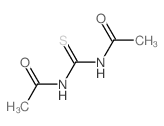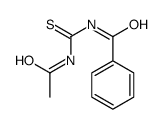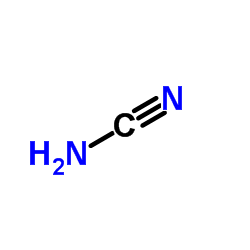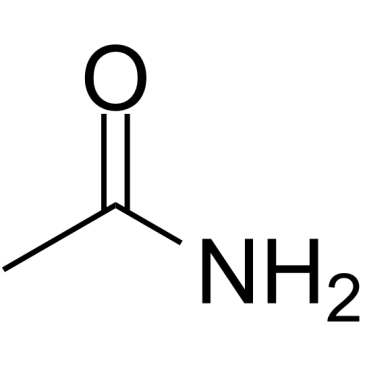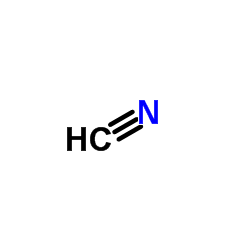591-08-2
| 中文名 | 乙酰硫脲 |
|---|---|
| 英文名 | N-carbamothioylacetamide |
| 英文别名 |
N-acetyl thiourea
Acetothiourea MFCD00004937 1-Acetylthiourea Ethanesulfenamide, N-(aminocarbonyl)-1-oxo- Urea,1-acetyl-2-thio Acetylthiourea 1-(Acetylsulfanyl)urea N'-acetyltbiocarbamide N-Acetylthiocarbamide EINECS 209-699-9 1-ACETYL-2-THIOUREA N-acetyl-2-thiourea N-ACETYLTHIOUREA |
| 密度 | 1.4±0.1 g/cm3 |
|---|---|
| 沸点 | 208.6ºC at 760 mmHg |
| 熔点 | 165-169 °C(lit.) |
| 分子式 | C3H6N2O2S |
| 分子量 | 134.157 |
| 精确质量 | 134.014999 |
| PSA | 87.21000 |
| LogP | -0.60 |
| 外观性状 | 固体;White to Light yellow powder to crystal |
| 折射率 | 1.543 |
| 储存条件 | 1.将密器密封,储存密封的主藏器内,并放在阴凉, 干爽的位置。 |
| 稳定性 | 1.高毒性。 |
| 水溶解性 | 水溶性:微溶;可溶于:醇;微溶:乙醚 |
| 分子结构 | 1、 摩尔折射率:30.39 2、 摩尔体积(cm3/mol):92.6 3、 等张比容(90.2K):260.1 4、 表面张力(dyne/cm):62.1 5、 极化率(10-24cm3):12.05 |
| 计算化学 | 1.疏水参数计算参考值(XlogP):-0.1 2.氢键供体数量:2 3.氢键受体数量:2 4.可旋转化学键数量:0 5.互变异构体数量:5 6.拓扑分子极性表面积87.2 7.重原子数量:7 8.表面电荷:0 9.复杂度:101 10.同位素原子数量:0 11.确定原子立构中心数量:0 12.不确定原子立构中心数量:0 13.确定化学键立构中心数量:0 14.不确定化学键立构中心数量:0 15.共价键单元数量:1 |
| 更多 | 1. 性状:针状晶体。 2. 密度(g/mL,25/4℃):未确定 3. 相对蒸汽密度(g/mL,空气=1):未确定 4. 熔点(ºC):165~169 5. 沸点(ºC,常压):未确定 6. 沸点(ºC, 5.2kPa):未确定 7. 折射率:未确定 8. 闪点(ºC):未确定 9. 比旋光度(º ):未确定 10. 自燃点或引燃温度(ºC):未确定 11. 蒸气压(kPa,25ºC):未确定 12. 饱和蒸气压(kPa,60ºC):未确定 13. 燃烧热(KJ/mol):未确定 14. 临界温度(ºC):未确定 15. 临界压力(KPa):未确定 16. 油水(辛醇/水)分配系数的对数值:未确定 17. 爆炸上限(%,V/V):未确定 18. 爆炸下限(%,V/V):未确定 19. 溶解性:溶于热乙醇和热水,微溶于冷水和乙醚。 |
Synonym:Acetamide, N-(aminothioxomethyl)-; Acetothiourea; Acetylthiocarbamide; N-Acetylthiocarbamide; Acetyl thiourea; 1-Acetylthiourea; 1-Acetyl-2-thiourea; Urea, 1-acetyl-2-thio Section 2 - COMPOSITION, INFORMATION ON INGREDIENTS
Risk Phrases: 23/24/25 Section 3 - HAZARDS IDENTIFICATION EMERGENCY OVERVIEW
Toxic by inhalation, in contact with skin and if swallowed.The toxicological properties of this material have not been fully investigated. Potential Health Effects Eye: May cause eye irritation. Skin: May cause skin irritation. May cause allergic contact dermatitis. Ingestion: May be fatal if swallowed. May cause gastrointestinal irritation with nausea, vomiting and diarrhea. The toxicological properties of this substance have not been fully investigated. Inhalation: May cause respiratory tract irritation. The toxicological properties of this substance have not been fully investigated. May cause irritation of the mucous membranes. Chronic: No information found. Section 4 - FIRST AID MEASURES Eyes: Immediately flush eyes with plenty of water for at least 15 minutes, occasionally lifting the upper and lower eyelids. Get medical aid immediately. Skin: Get medical aid immediately. Immediately flush skin with plenty of water for at least 15 minutes while removing contaminated clothing and shoes. Ingestion: Never give anything by mouth to an unconscious person. Get medical aid immediately. Do NOT induce vomiting. If conscious and alert, rinse mouth and drink 2-4 cupfuls of milk or water. Induce vomiting only when instructed to do so by a physician. Inhalation: Get medical aid immediately. Remove from exposure and move to fresh air immediately. Do not use mouth-to-mouth resuscitation if victim ingested or inhaled the substance; induce artificial respiration with the aid of a pocket mask equipped with a one-way valve or other proper respiratory medical device. Notes to Physician: Section 5 - FIRE FIGHTING MEASURES General Information: As in any fire, wear a self-contained breathing apparatus in pressure-demand, MSHA/NIOSH (approved or equivalent), and full protective gear. During a fire, irritating and highly toxic gases may be generated by thermal decomposition or combustion. Extinguishing Media: Use water spray, dry chemical, carbon dioxide, or appropriate foam. Section 6 - ACCIDENTAL RELEASE MEASURES General Information: Use proper personal protective equipment as indicated in Section 8. Spills/Leaks: Wash area with soap and water. Clean up spills immediately, observing precautions in the Protective Equipment section. Sweep up, then place into a suitable container for disposal. Avoid generating dusty conditions. Provide ventilation. Section 7 - HANDLING and STORAGE Handling: Wash thoroughly after handling. Remove contaminated clothing and wash before reuse. Use only in a well-ventilated area. Do not get in eyes, on skin, or on clothing. Keep container tightly closed. Do not ingest or inhale. Use only in a chemical fume hood. Discard contaminated shoes. Storage: Store in a cool, dry, well-ventilated area away from incompatible substances. Keep containers tightly closed. Section 8 - EXPOSURE CONTROLS, PERSONAL PROTECTION Engineering Controls: Facilities storing or utilizing this material should be equipped with an eyewash facility and a safety shower. Use adequate ventilation to keep airborne concentrations low. Exposure Limits CAS# 591-08-2: Personal Protective Equipment Eyes: Wear appropriate protective eyeglasses or chemical safety goggles as described by OSHA's eye and face protection regulations in 29 CFR 1910.133 or European Standard EN166. Skin: Wear appropriate protective gloves to prevent skin exposure. Clothing: Wear appropriate protective clothing to prevent skin exposure. Respirators: A respiratory protection program that meets OSHA's 29 CFR 1910.134 and ANSI Z88.2 requirements or European Standard EN 149 must be followed whenever workplace conditions warrant respirator use. Section 9 - PHYSICAL AND CHEMICAL PROPERTIES Physical State: Crystals Color: white Odor: none reported pH: Not available. Vapor Pressure: Not available. Viscosity: Not available. Boiling Point: Not available. Freezing/Melting Point: 165.00 - 169.00 deg C Autoignition Temperature: Not applicable. Flash Point: Not applicable. Explosion Limits, lower: Not available. Explosion Limits, upper: Not available. Decomposition Temperature: Not available. Solubility in water: Soluble in hot water. Specific Gravity/Density: Not available. Molecular Formula: CH3CONHCSNH2 Molecular Weight: 118.15 Section 10 - STABILITY AND REACTIVITY Chemical Stability: Stable under normal temperatures and pressures. Conditions to Avoid: Incompatible materials. Incompatibilities with Other Materials: Strong oxidizing agents, strong acids, strong bases. Hazardous Decomposition Products: Nitrogen oxides, carbon monoxide, oxides of sulfur, carbon dioxide. Hazardous Polymerization: Has not been reported Section 11 - TOXICOLOGICAL INFORMATION RTECS#: CAS# 591-08-2: YR7700000 LD50/LC50: CAS# 591-08-2: Oral, rat: LD50 = 50 mg/kg. Carcinogenicity: N-Acetylthiourea - Not listed by ACGIH, IARC, or NTP. Other: See actual entry in RTECS for complete information. Section 12 - ECOLOGICAL INFORMATION Other No information available. Section 13 - DISPOSAL CONSIDERATIONS Dispose of in a manner consistent with federal, state, and local regulations. Section 14 - TRANSPORT INFORMATION IATA Shipping Name: TOXIC SOLID, ORGANIC, N.O.S.* Hazard Class: 6.1 UN Number: 2811 Packing Group: II IMO Shipping Name: TOXIC SOLID, ORGANIC, N.O.S. Hazard Class: 6.1 UN Number: 2811 Packing Group: II RID/ADR Shipping Name: TOXIC SOLID, ORGANIC, N.O.S. Hazard Class: 6.1 UN Number: 2811 Packing group: II USA RQ: CAS# 591-08-2: 1000 lb final RQ; 454 kg final RQ Section 15 - REGULATORY INFORMATION European/International Regulations European Labeling in Accordance with EC Directives Hazard Symbols: T Risk Phrases: R 23/24/25 Toxic by inhalation, in contact with skin and if swallowed. Safety Phrases: S 23 Do not inhale gas/fumes/vapour/spray. S 24/25 Avoid contact with skin and eyes. WGK (Water Danger/Protection) CAS# 591-08-2: No information available. Canada CAS# 591-08-2 is listed on Canada's NDSL List. CAS# 591-08-2 is not listed on Canada's Ingredient Disclosure List. US FEDERAL TSCA CAS# 591-08-2 is listed on the TSCA inventory. SECTION 16 - ADDITIONAL INFORMATION N/A |
|
毒理学数据: 与分类相关的LD/LC50值: 口腔 LD50 54mg/kg(rat) 90mg/kg(mus) 生态学数据: 1、其它有害作用:该物质对环境可能有危害,对水体应给予特别注意。 CHEMICAL IDENTIFICATION
HEALTH HAZARD DATAACUTE TOXICITY DATA
|
| 符号 |

GHS06 |
|---|---|
| 信号词 | Danger |
| 危害声明 | H300 |
| 警示性声明 | P264-P301 + P310 |
| 个人防护装备 | Eyeshields;Faceshields;Gloves;type P2 (EN 143) respirator cartridges |
| 危害码 (欧洲) | T:Toxic; |
| 风险声明 (欧洲) | R23/24/25 |
| 安全声明 (欧洲) | S36/37/39-S45 |
| 危险品运输编码 | UN 2811 6.1/PG 2 |
| WGK德国 | 3 |
| RTECS号 | YR7700000 |
| 包装等级 | II |
| 危险类别 | 6.1 |
| 上游产品 9 | |
|---|---|
| 下游产品 10 | |



